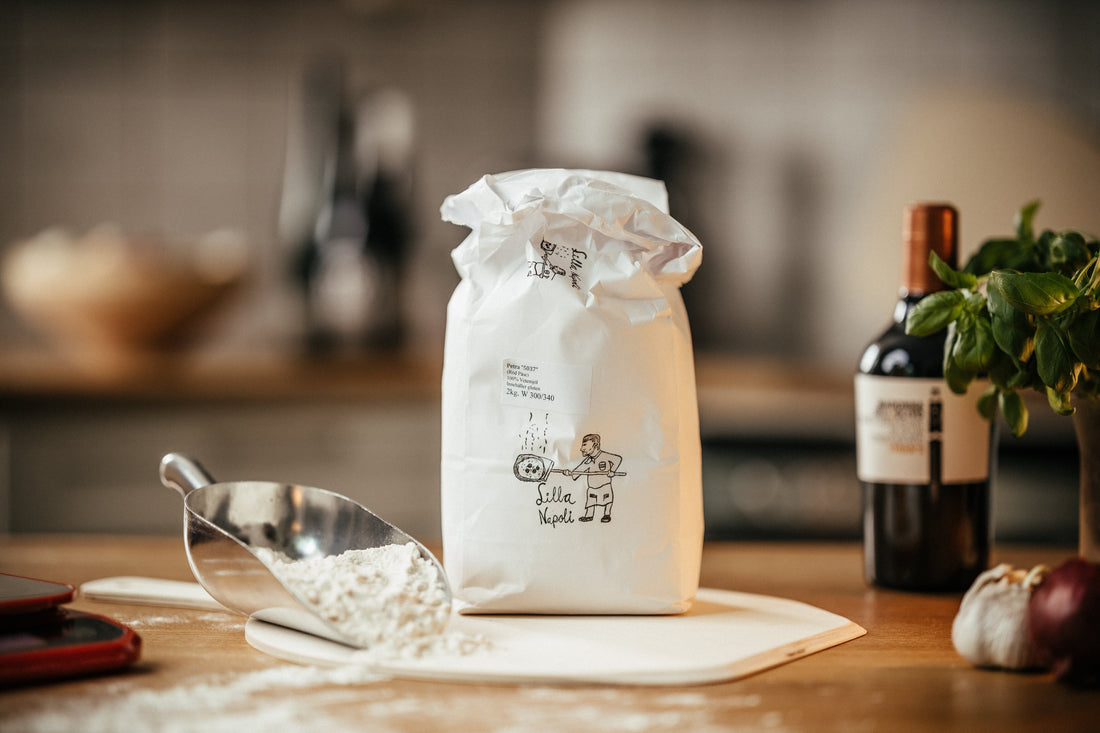Pizza dough and flour really are a jungle. There's a lot to keep track of, which is clearly annoying as this aspect of the pizza simply has to be right. Here, we've gathered essential explanations for the Nerd-info part of our flours, so you can get a better understanding of how to choose the right flour and succeed with your pizza dough.
Try our "dough calculator"
If you want to know how much of each ingredient you need to make your pizzas, you can use our dough calculator.
You only need to enter how many pizzas you want, how long you plan for the dough to ferment and the temperature it will ferment at. Then you'll get everything you need to know!
What does the flour’s "W-number" mean?
The W-number, often written as "W 300" for example, is a term we often throw around. Simply put, the W-number is a measure of the flour's strength, which is determined by measurements with an alveograph (a machine that measures a flour's quality among other things). A higher W-number means that the flour is stronger and can handle more water as well as longer fermentation times.
For making pizza, one usually uses relatively strong flours with a W-number between 260 and 380. For regular doughs (direct) the strength is usually between 260 and 310. The strongest flours are often used for indirect doughs such as biga. Strong flours are also used for Pizza Canotto, which is a type of pizza making where you do everything you can to get as high edges as possible with maximum swoosh.
However, it's important to add that the alveograph only measures in a short fermentation where it has a hydration of 50%, given that the measurements aren't from an AH alveograph. Therefore, one must complement with one's own tests.
Use spread test and achieve the right dough strength
The strength of the dough is one of the most important things to get right if you want to make great pizza. Besides, a good strength makes the actual rolling out infinitely easier. When we talk about strength, there are three things it's about: elasticity, resistance to stretch, and stretchability. You can read more about this in our book, but the conclusion is in any case that it has to be right.
What spread test is
Spread test is a term we use to measure the dough’s strength in a more practical way. Doing a strength check of the dough is a great tool for both beginners and experts, so we really recommend it.
Once you've done it a few times, you'll learn how the dough should feel, and then you can skip it in the future - not too often, at least. It also becomes extra important as most people ferment their Neapolitan pizza doughs for more than 12 hours at room temperature, which is a fairly long fermentation, which affects the character.
The spread test involves taking a 260-gram pizza ball during the rolling process and placing it in an oven dish that is at least 17x17 cm. Then, wrap the dish in plastic and place it next to the other dough balls. After about 24 hours in total, and the volume has increased to about 26 on the rain gauge, the dough in the mold should have a diameter of 14-15 cm for a correct strength.

Our ambition
In the future, we'll always state the dough's strength with a certain flour, so you know how to adjust the water quantity. This, along with how well the dough retains strength over time, are after all some of the biggest practical differences between different flours, and the W-number isn't always enough since all flours behave differently.
Right now, we've written how to adjust the water quantity depending on different flours. For example, you should use about 4% less water than our recipe says if you bake with Piantoni flour. This is stated in our flour product descriptions.
In other words, our goal is to complement the limitations of the W-number here. So you'll have to do the test yourself until we've managed to get out our own tests :)
Water absorption in a farinograph
Here you can see some figures on how the water absorption, measured in a farinograph, differs between different flours:

